With over 6,000 farmers applying for TAMS II grant aid for investing in farming infrastructure and more approvals due this month, building and construction activity is going to increase significantly this year on farms.
Construction work adds another considerable layer of risk to farm enterprises. With the farmyard being effectively turned into a construction site when a shed is being built, ensuring your safety, your children’s safety and the safety of the people working on your farm is vital.
Eighteen people were killed on Irish farms last year and three deaths occurred in the first quarter of this year. The added danger of construction taking place is likely to increase hazards on the farm and it is up to all farmers to be aware of the risks involved with building work and plan ahead to try and prevent accidents from happening.
With the animals thrown into the mix, there is added danger. It is crucial that the construction workers are aware of the dangers that the animals also pose. In the series of photos, we go through the main risks involved in construction to help you become more aware of the dangers.
Picture one
Farmers and construction workers on site, working alongside heavy machinery, have to be very vigilant when it comes to their own safety. Thirty-nine people have been killed by tractors and machinery on Irish farms since 2006.

During construction work, with machinery and lorries entering and leaving the yard frequently, you must be always alert. At all times, be careful and vigilant when machinery is freely moving around the yard, remember just because you can see the machine it doesn’t mean the driver can see you.
If you are in the driving seat, always ensure you are fully aware of the location of the other people in the farmyard. Similarly, if you are operating your own tractor, be mindful of other heavy machinery entering and exiting the farm because collisions can occur easily. With heavy duty vehicles such as concrete mixers in operation, the farmyard is not a place for children.
As usual day to day farm operations continue, ensure the construction workers and drivers are fully aware of what you are doing so any possible risks are reduced for them too.
Picture two
The dangers of slurry tanks have been well documented but the risks involved in the construction of one can be equally as dangerous. A typical slurry tank is eight foot deep and when under construction can be hazardous.
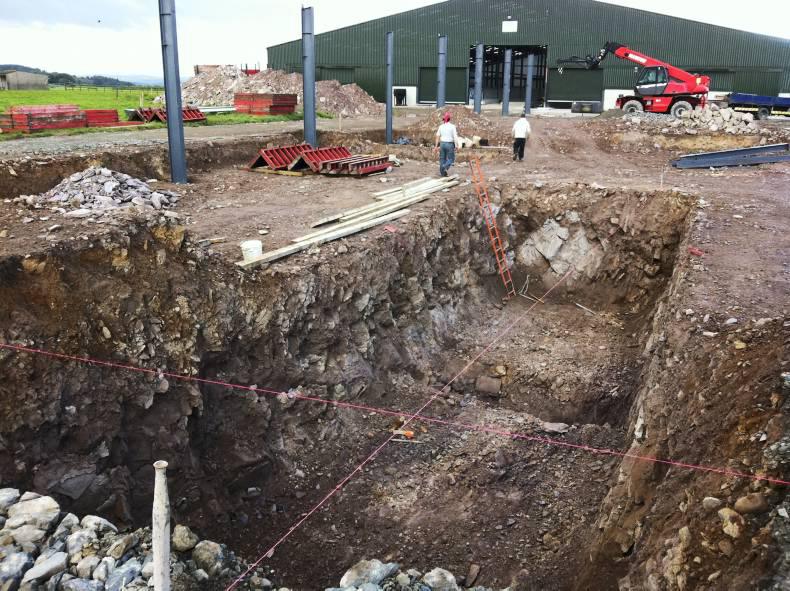
During building work, an open tank means a greater chance of a person or animal falling in, which may lead to serious injury or death. Erecting temporary fencing around the area should be considered by the farmer to ensure this situation is avoided. Also putting up warning signs and verbally telling visitors about the open tank guarantees they are aware of the danger.
Working in a recently excavated tank is also very dangerous and there is always the risk of the clay sides collapsing. TAMS II covers the construction of a concrete tank inside an existing shed once the agitation points are external. Many farmers might decide to go for such an investment to make old haysheds suitable for housing livestock.
However, this has to come with a health warning. Excavating inside an existing shed can be very dangerous – the weight of pillars and walls could easily cause a slippage.
If someone is working inside the tank and a steel stanchion comes tumbling down on top of them, it will almost certainly lead to a fatality.
Picture three
A farmyard undergoing construction is more exposed to the risk of electricity due to excavation work and high loaders that can come in contact with overhead wire.
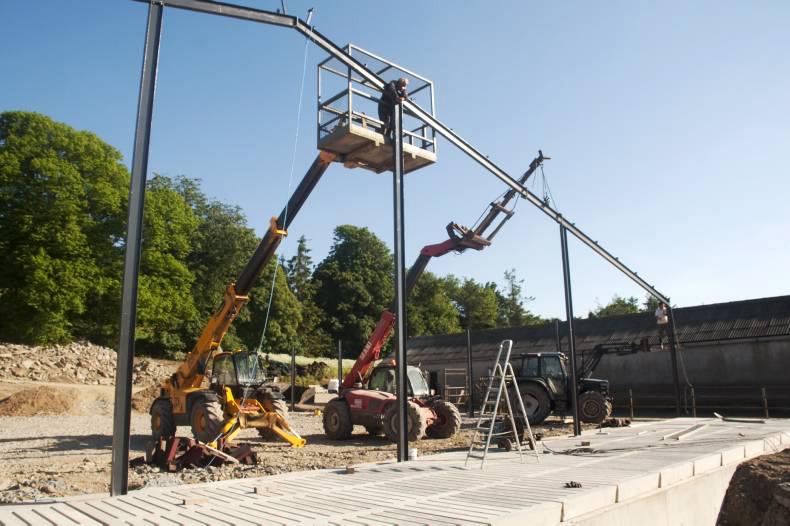
Electricity and overhead lines are a big danger on farms and with an increased amount of activity, accidents can easily occur. You must ensure contractors on the farm are fully aware of over head power lines which could potentially be lethal.
Picture four
With building materials lying around the farmyard, trips and falls can be common. Such accidents can lead to serious harm, such as broken bones or fractures.
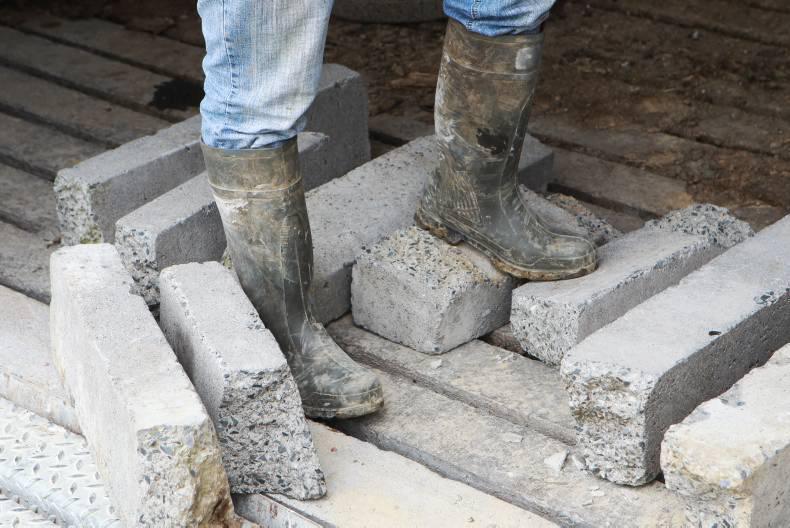
There are serious implications for the farmer if such an accident was to occur.
It could mean paying a farm labourer to run the farm and if the farmer is part time, taking time off work. Ensure you consult with the contractors that everything is kept organised and tidy. By keeping the mess to the minimum, incidences of falls, trips or any other such accidents are avoided or at the least, the risk is minimised.
During building work, the message from Arthur Byrne, public safety manager with ESB Networks, is to be aware of the risks involved with electricity and large machinery.
Coming close to overhead electricity wires is extremely dangerous because electricity can jump gaps and will discharge through metallic structures, putting those nearby in serious danger.
Accidents have also happened involving high loads, tipper lorries and cranes, either when driving under electricity wires or setting up beneath the wires. Tipper trucks should always move with the trailer fully down and only tip in areas which are properly segregated from overhead wires.
Careful planning to ensure that risk is managed carefully is crucial. In situations where construction work is being planned or is about to take place and there are overhead electricity wires or buried cables near, the advice from ESB Networks is to take the time to plan the work with safety in mind and take the appropriate steps to control the risk posed by electricity.
Ensure children are not allowed on the building site.Have clear communication between contractor and farmer.Be organised.Ensure contractors are aware of overhead power lines. Ensure the yard is kept tidy so trips are avoided. All farmers should consider employers liability cover to be part of a basic farm insurance package, especially when building work is going to be taking place on the farm.To read the full Buildings and TAMS II Focus supplement, click
With over 6,000 farmers applying for TAMS II grant aid for investing in farming infrastructure and more approvals due this month, building and construction activity is going to increase significantly this year on farms.
Construction work adds another considerable layer of risk to farm enterprises. With the farmyard being effectively turned into a construction site when a shed is being built, ensuring your safety, your children’s safety and the safety of the people working on your farm is vital.
Eighteen people were killed on Irish farms last year and three deaths occurred in the first quarter of this year. The added danger of construction taking place is likely to increase hazards on the farm and it is up to all farmers to be aware of the risks involved with building work and plan ahead to try and prevent accidents from happening.
With the animals thrown into the mix, there is added danger. It is crucial that the construction workers are aware of the dangers that the animals also pose. In the series of photos, we go through the main risks involved in construction to help you become more aware of the dangers.
Picture one
Farmers and construction workers on site, working alongside heavy machinery, have to be very vigilant when it comes to their own safety. Thirty-nine people have been killed by tractors and machinery on Irish farms since 2006.

During construction work, with machinery and lorries entering and leaving the yard frequently, you must be always alert. At all times, be careful and vigilant when machinery is freely moving around the yard, remember just because you can see the machine it doesn’t mean the driver can see you.
If you are in the driving seat, always ensure you are fully aware of the location of the other people in the farmyard. Similarly, if you are operating your own tractor, be mindful of other heavy machinery entering and exiting the farm because collisions can occur easily. With heavy duty vehicles such as concrete mixers in operation, the farmyard is not a place for children.
As usual day to day farm operations continue, ensure the construction workers and drivers are fully aware of what you are doing so any possible risks are reduced for them too.
Picture two
The dangers of slurry tanks have been well documented but the risks involved in the construction of one can be equally as dangerous. A typical slurry tank is eight foot deep and when under construction can be hazardous.

During building work, an open tank means a greater chance of a person or animal falling in, which may lead to serious injury or death. Erecting temporary fencing around the area should be considered by the farmer to ensure this situation is avoided. Also putting up warning signs and verbally telling visitors about the open tank guarantees they are aware of the danger.
Working in a recently excavated tank is also very dangerous and there is always the risk of the clay sides collapsing. TAMS II covers the construction of a concrete tank inside an existing shed once the agitation points are external. Many farmers might decide to go for such an investment to make old haysheds suitable for housing livestock.
However, this has to come with a health warning. Excavating inside an existing shed can be very dangerous – the weight of pillars and walls could easily cause a slippage.
If someone is working inside the tank and a steel stanchion comes tumbling down on top of them, it will almost certainly lead to a fatality.
Picture three
A farmyard undergoing construction is more exposed to the risk of electricity due to excavation work and high loaders that can come in contact with overhead wire.

Electricity and overhead lines are a big danger on farms and with an increased amount of activity, accidents can easily occur. You must ensure contractors on the farm are fully aware of over head power lines which could potentially be lethal.
Picture four
With building materials lying around the farmyard, trips and falls can be common. Such accidents can lead to serious harm, such as broken bones or fractures.

There are serious implications for the farmer if such an accident was to occur.
It could mean paying a farm labourer to run the farm and if the farmer is part time, taking time off work. Ensure you consult with the contractors that everything is kept organised and tidy. By keeping the mess to the minimum, incidences of falls, trips or any other such accidents are avoided or at the least, the risk is minimised.
During building work, the message from Arthur Byrne, public safety manager with ESB Networks, is to be aware of the risks involved with electricity and large machinery.
Coming close to overhead electricity wires is extremely dangerous because electricity can jump gaps and will discharge through metallic structures, putting those nearby in serious danger.
Accidents have also happened involving high loads, tipper lorries and cranes, either when driving under electricity wires or setting up beneath the wires. Tipper trucks should always move with the trailer fully down and only tip in areas which are properly segregated from overhead wires.
Careful planning to ensure that risk is managed carefully is crucial. In situations where construction work is being planned or is about to take place and there are overhead electricity wires or buried cables near, the advice from ESB Networks is to take the time to plan the work with safety in mind and take the appropriate steps to control the risk posed by electricity.
Ensure children are not allowed on the building site.Have clear communication between contractor and farmer.Be organised.Ensure contractors are aware of overhead power lines. Ensure the yard is kept tidy so trips are avoided. All farmers should consider employers liability cover to be part of a basic farm insurance package, especially when building work is going to be taking place on the farm.To read the full Buildings and TAMS II Focus supplement, click












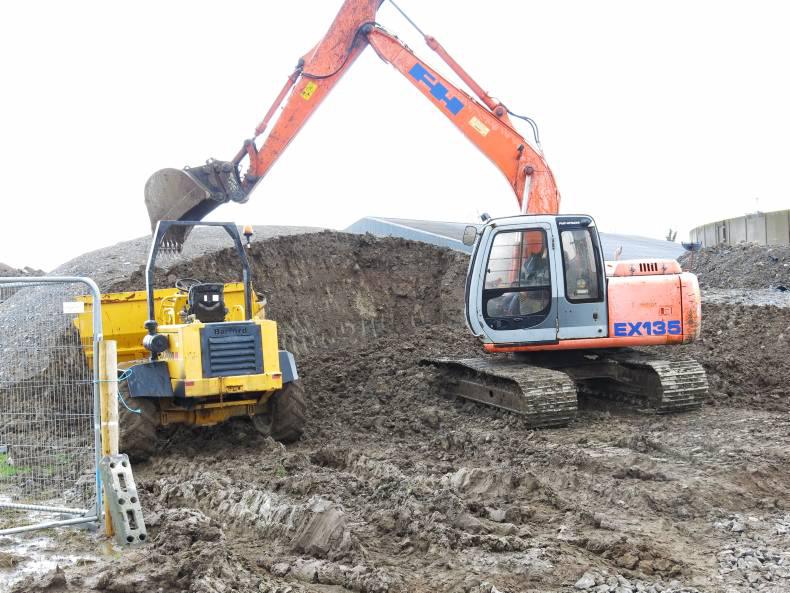


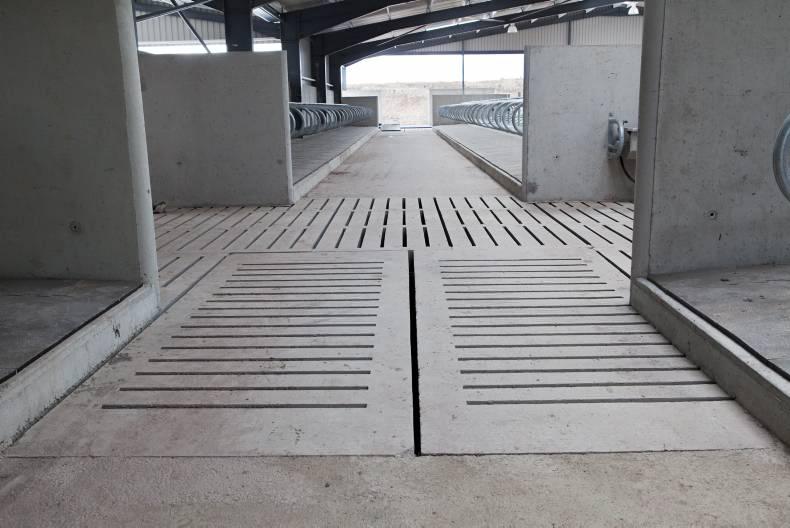
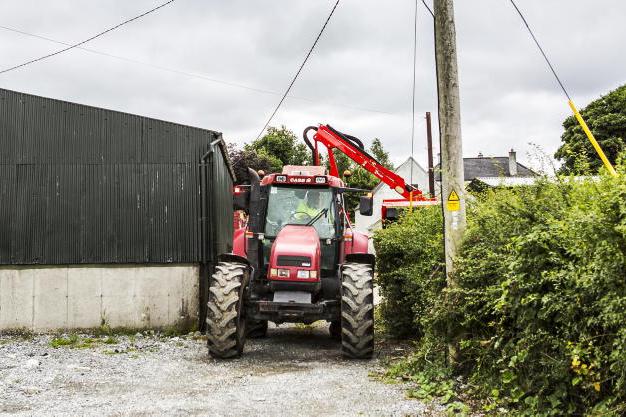
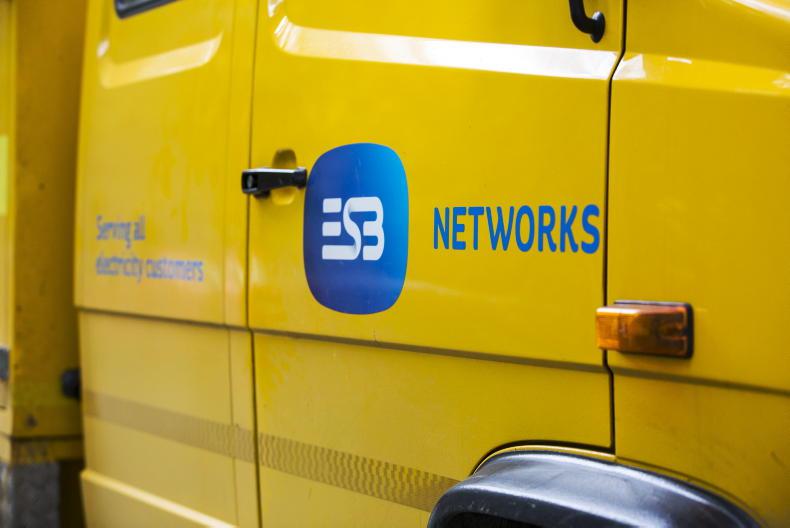
SHARING OPTIONS